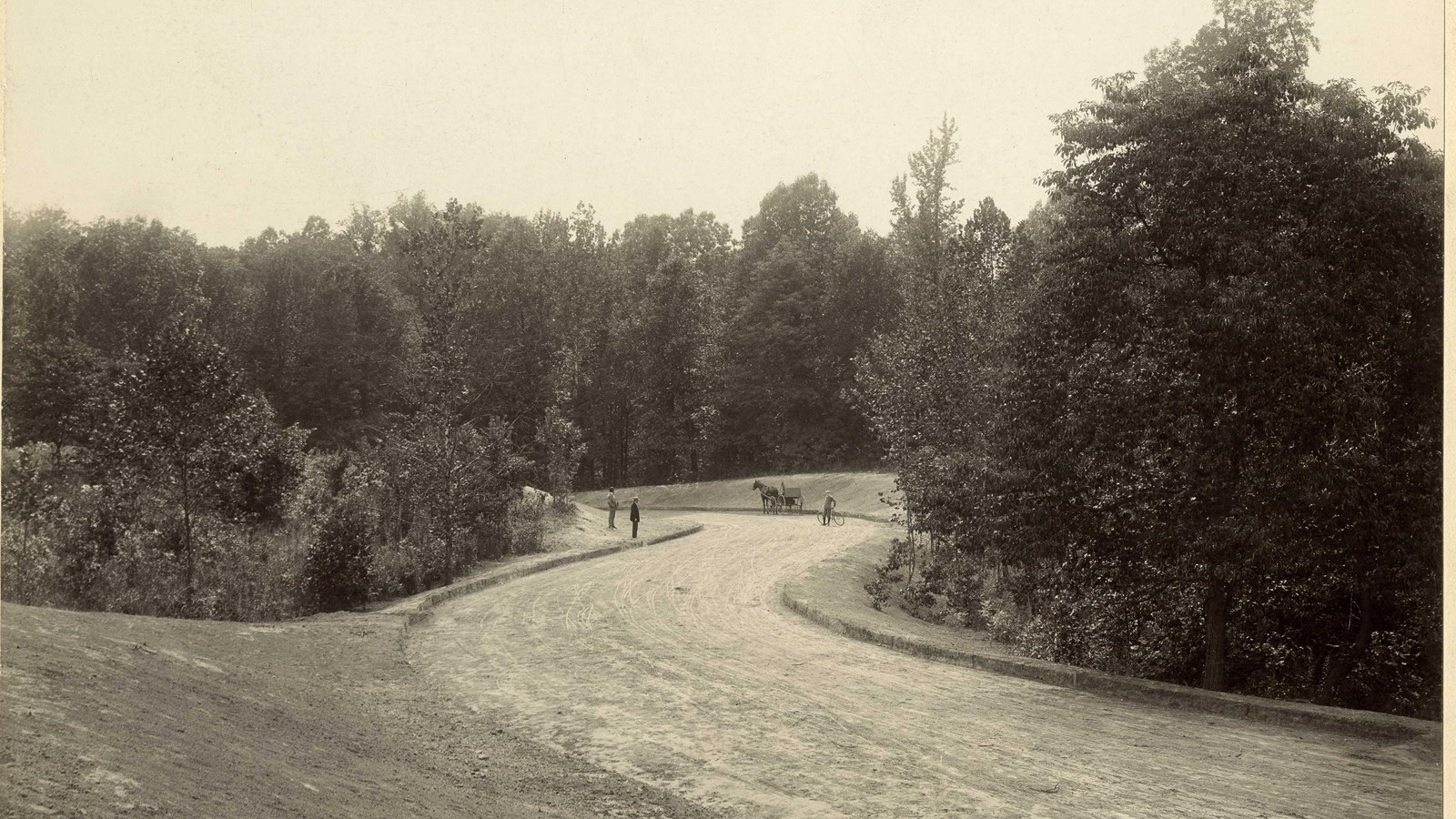Last updated: June 6, 2024
Place
Iroquois Park

Olmsted Archives
Quick Facts
Addressing the Salmagundi Club, a small group of Louisville civic leaders, in 1891, Frederick Law Olmsted wanted to further their interest in establishing a park system. As a result of this meeting, the Louisville Park Commission was formed to create a network of parks and boulevards, the last major park system of Olmsted Sr.’s career.
Three large parks would anchor the system along the city’s perimeter, with Iroquois Park, laying at the Southern edge. Louisville’s mayor Charles Jacob personally purchased the property that Iroquois Park would sit on. For Iroquois Park, Olmsted envisioned a scenic reservation on a rugged, steep, heavily wooded hillside.
Built on 739-acres, Iroquois Park is the largest in Olmsted’s Louisville Park System. The hillside Iroquois Park sits on is covered with an old-growth forests, prompting Olmsted to call it “Louisville’s Yellowstone”. Olmsted designed paths through the park to dramatize the forested landscape to achieve changing, panoramic, scenic vistas from overlooks.
Source: "Iroquois Park," The Cultural Landscape Foundation
For more information and primary resources, please visit:
Olmsted Research Guide Online
Olmsted Archives on Flickr
Olmsted Online
Three large parks would anchor the system along the city’s perimeter, with Iroquois Park, laying at the Southern edge. Louisville’s mayor Charles Jacob personally purchased the property that Iroquois Park would sit on. For Iroquois Park, Olmsted envisioned a scenic reservation on a rugged, steep, heavily wooded hillside.
Built on 739-acres, Iroquois Park is the largest in Olmsted’s Louisville Park System. The hillside Iroquois Park sits on is covered with an old-growth forests, prompting Olmsted to call it “Louisville’s Yellowstone”. Olmsted designed paths through the park to dramatize the forested landscape to achieve changing, panoramic, scenic vistas from overlooks.
Source: "Iroquois Park," The Cultural Landscape Foundation
For more information and primary resources, please visit:
Olmsted Research Guide Online
Olmsted Archives on Flickr
Olmsted Online
Success
Thank you. Your feedback has been received.
Error
alert message







